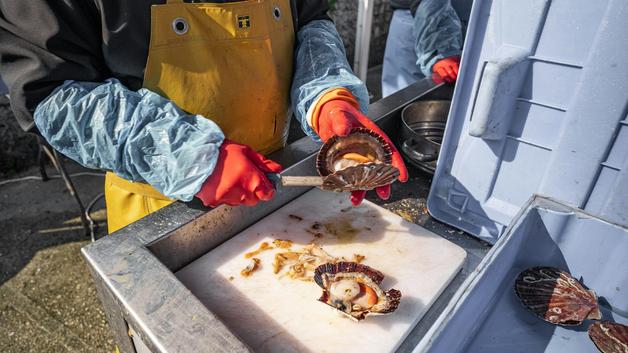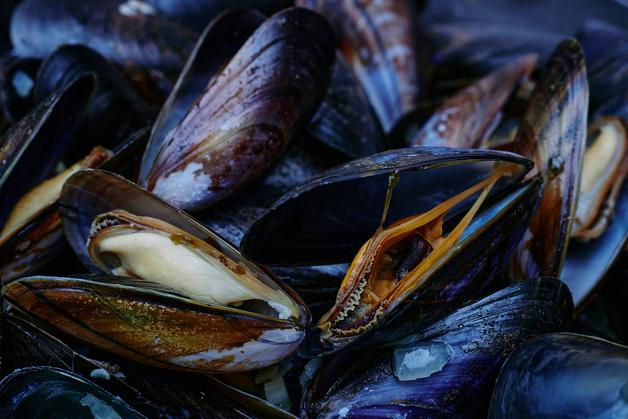Parents who have ever hesitated in front of a shimmering seafood counter, uncertain whether to indulge or abstain, understand the puzzle: how do you balance delight in a favorite dish with concerns about health during pregnancy? Terms like seafood pregnancy tend to awaken a storm of questions—each layered with the weight of responsibility. Is that craving for shrimp a nutritional blessing, a risk to your child, or perhaps both at once? Your worries are valid, as anxiety over mercury, concerns about hidden bacteria, and confusion about sourcing swirl in your mind. Yet with the right knowledge, these worries transform into confident choices. These next sections address head-on the medical facts, the daily realities, and the expert reassurances that will support smart, enjoyable decisions.
The Science Behind Seafood Pregnancy: Benefits Tempered by Wisdom
Imagine a plate filled with shimmering salmon, tender scallops, and vibrant green beans. Not only is your meal appealing, but each bite brings nutrients primed for both mother and child. Omega-3 fatty acids—particularly docosahexaenoic acid (DHA) and eicosapentaenoic acid (EPA)—play a starring role in fetal neurodevelopment, a term that refers to the structural and functional growth of the brain and eyesight from early gestation onward. Studies illuminate an association between seafood pregnancy and higher cognitive scores in children, especially when parents consume 1–2 servings of low-mercury fish per week.
But these aren’t the only nutrients joining the party. Elements like iodine regulate the maternal thyroid, an orchestra conductor of metabolism and neurodevelopment. Vitamin D and selenium (known for their antioxidant properties) support skeletal growth and protect against cellular stress. Then there’s the high-quality protein, involved in everything from tissue construction to immune modulation—an often-overlooked asset. Iron (especially from shellfish) aids in fending off anemia, supporting both parental energy and healthy birth weight.
Why then the caution? Because lurking in some species—predatory fish or certain deep-sea varieties—are risks like methylmercury, a neurotoxin. This underscores the need for parents to distinguish between low-mercury, nutrient-rich options and those safer left on the shelf.
Making Informed Choices: What Seafood Pregnancy Means for Your Diet
You stand in the kitchen, recipe card in hand, wondering: which seafood is a go, and which to skip until postpartum? The distinction between “yes” and “no” fish is not simply arbitrary—it’s grounded in extensive scientific and clinical recommendations.
Consider the following “safe bet” options:
- Salmon, sardines, trout, and herring—top-shelf providers of DHA/EPA and typically low in mercury
- Well-cooked shrimp, scallops, crab, and lobster
- Lean fish such as tilapia, cod, and pollock
- Canned light tuna—enjoyed moderately, reflecting advice on mercury exposure
- Small white fish: sole, catfish, merlu
Ask yourself: has this seafood been cooked to an internal temperature of 165°F (74°C)? Fully cooked products minimize the risks presented by Listeria monocytogenes—an organism infamous for causing rare, but severe, pregnancy-related illnesses like listeriosis. Only cook shellfish that open completely, discarding any unopened after cooking.
Avoid high-mercury predators—swordfish, king mackerel, shark, marlin—alongside raw delicacies (sashimi, oysters, carpaccio) and non-pasteurized caviar or cold-smoked fish. The temptation may be strong, but so is the science linking these products to avoidable harm during seafood pregnancy.
Medical Risks and Safety Measures: How to Protect Parents and Infants
Is every bite a gamble? Far from it, provided you cultivate a few protective habits. The greatest microbial threats—Listeria, Salmonella, Toxoplasma, hepatitis A—vanish in the face of consistent high temperatures. Maintain hygiene: wash hands, utensils, and surfaces, especially after handling raw fish. Separate raw from cooked foods. Store fresh seafood in the coldest part of your refrigerator and consume (or freeze) within two days.
Exposure to heavy metals, particularly mercury, strikes a chord of fear in many. Mercury crosses the placenta, affecting fetal brain development. But the solution is not avoidance—it’s moderation. Rotate species, choose smaller fish, and heed intake advisories. The environmental fact: tiny fish accumulate far less mercury than massive, long-lived predators.
Symptoms of complications may appear subtle and are not to be ignored. Gastrointestinal distress, neurological symptoms (like tingling, numbness, or vision changes), and sudden allergic reactions warrant medical attention. When in doubt, consult your health provider—prompt assessment can make all the difference.
Meal Planning in Seafood Pregnancy: Ideas, Substitutions, and Smart Pairings
Now for the true pleasure: building meals that keep you and your growing baby thriving. Seafood finds harmonious company with whole grains (quinoa, brown rice, whole wheat pasta), bright seasonal vegetables, and healthy fats (like a splash of canola oil, rich in plant omega-3s). Create vibrant salmon bowls layered with tomatoes, cucumbers, and olives; or delight in a broiled shrimp stir-fry elevated by ginger and steamed Asian greens.
Fancy a change? Fully cooked mussel paella or tilapia crowned with a tangy fruit salsa brings diversity and joy to the table, clicking perfectly into your dietary rotation. Variation supports not just nutrition but also meal satisfaction, minimizing monotony during seafood pregnancy.
Vegetarian or allergic? You’re not excluded—simply shift focus. Look to algae-based omega-3 supplements, which deliver DHA/EPA minus the fish, and consult your healthcare provider about dosage and quality. Combine plant-based ALA (from flaxseed, walnuts) with rich proteins found in well-cooked eggs, legumes, and soy. Although conversion from ALA to DHA/EPA is limited, every bit helps, especially with a balanced, varied diet.
Safe Sourcing and Kitchen Hygiene: Everyday Habits That Make a Difference
Picture the refrigerated seafood counter—cues for safety abound. Seek transparent labeling, clear expiry dates, and reputable vendors. Local, seasonal, and sustainably sourced options frequently promise maximum freshness and minimal exposure to contaminants like PCBs and dioxins. Trust your senses: if something smells or looks off, discard it. Shellfish should be purchased alive and cooked the day of purchase, their shells shut tight; let the heat work its magic, opening them as a sign of doneness.
In your kitchen, micro-decisions add up: use distinct cutting boards for raw and cooked foods. Change sponges and cloths frequently (germs thrive on surfaces). Never refreeze thawed seafood. Store promptly at the correct temperature (ideally 0–4°C). Even small steps—like immediate hands-washing post-preparation—help keep invisible threats at bay.
When to Seek Medical Advice: Empowered, Not Anxious
You might wonder which red flags deserve an urgent consult. Allergic symptoms—such as swelling, difficulty breathing, or rapid-onset hives—demand immediate attention. Suspect listeriosis? Watch for fever, severe stomach pain, vomiting, or persistent diarrhea soon after eating seafood. Concerns about mercury or other toxins should prompt a discussion with your provider, especially if neurological symptoms develop.
Some parents, especially those with previous allergic reactions, complex health conditions, or uncertainty over conflicting dietary advice, find solace in discussing seafood pregnancy with a qualified medical expert or registered dietitian. There’s no need to shoulder anxieties in silence—trusted professionals are known for their clinical insight and individualized recommendations.
Key Takeaways
- Seafood pregnancy rewards your table with abundant high-value nutrients—specifically omega-3 fatty acids, iodine, vitamin D, vitamin B12, iron, and selenium—all supporting parental well-being and optimal child development.
- Thoughtful choices matter: favor low-mercury, well-cooked seafood, and keep culinary variety high.
- Avoid raw options, non-pasteurized byproducts, and mercury-rich predator fish.
- Make kitchen hygiene a daily ritual—separation of raw and cooked, consistent temperature control, meticulous cleaning—these shield families from the preventable spread of foodborne bacteria.
- For those unable or unwilling to include fish, algae-derived omega-3 supplements, plant-based ALA sources, and alternative proteins offer significant value. Speak with your medical provider to ensure all needs are addressed.
- Personal questions or just a hint of uncertainty? Consult your healthcare professional. In addition, discover the Heloa app for tailored advice and free child health questionnaires—tools designed to empower and inform every parent on this journey.
The questions swirling around seafood pregnancy are familiar, understandable, and deserving of thoughtful answers. With credible knowledge and practical routines, the act of selecting seafood can become not a source of stress, but a nourishing celebration—supporting both your health and the little one on the way.
Questions Parents Ask
Can I eat sushi or raw seafood while pregnant?
It’s understandable to crave your favorite sushi rolls or raw oysters during pregnancy. However, raw or undercooked seafood, including sushi, carries a higher risk of harboring bacteria or parasites, such as Listeria or Salmonella, which can be more harmful to you and your baby during this period. It’s safest to opt for cooked sushi rolls or dishes made with fully cooked fish and shellfish. Most importantly, enjoy these safely prepared alternatives without worry, and know that these precautions are designed to protect your baby’s well-being.
How much seafood is safe to eat each week when expecting?
Parents naturally want to make the healthiest choices, especially when it comes to nutrition during pregnancy. In general, you can enjoy 2 to 3 servings (about 225 to 340 grams) of low-mercury seafood per week. This allows you to gain the benefits of omega-3s and other important nutrients without increasing the risks linked to mercury exposure. The key is to favor a variety of cooked fish and shellfish considered safe for pregnancy. Don’t hesitate to check in with your healthcare provider for guidance suited to your unique needs.
What should I do if I accidentally ate high-mercury fish?
Mistakes happen, and it’s completely normal to feel concerned if you realize you’ve eaten fish that may contain more mercury than recommended. In most cases, a single accidental serving is unlikely to harm your baby. Take a deep breath—there is usually no need to worry after an isolated incident. If you have ongoing concerns or have eaten high-mercury fish regularly, it’s a good idea to contact your medical professional for reassurance and advice. They’ll help you evaluate any further steps to take and support you in making confident, healthy choices moving forward.

Further reading :









